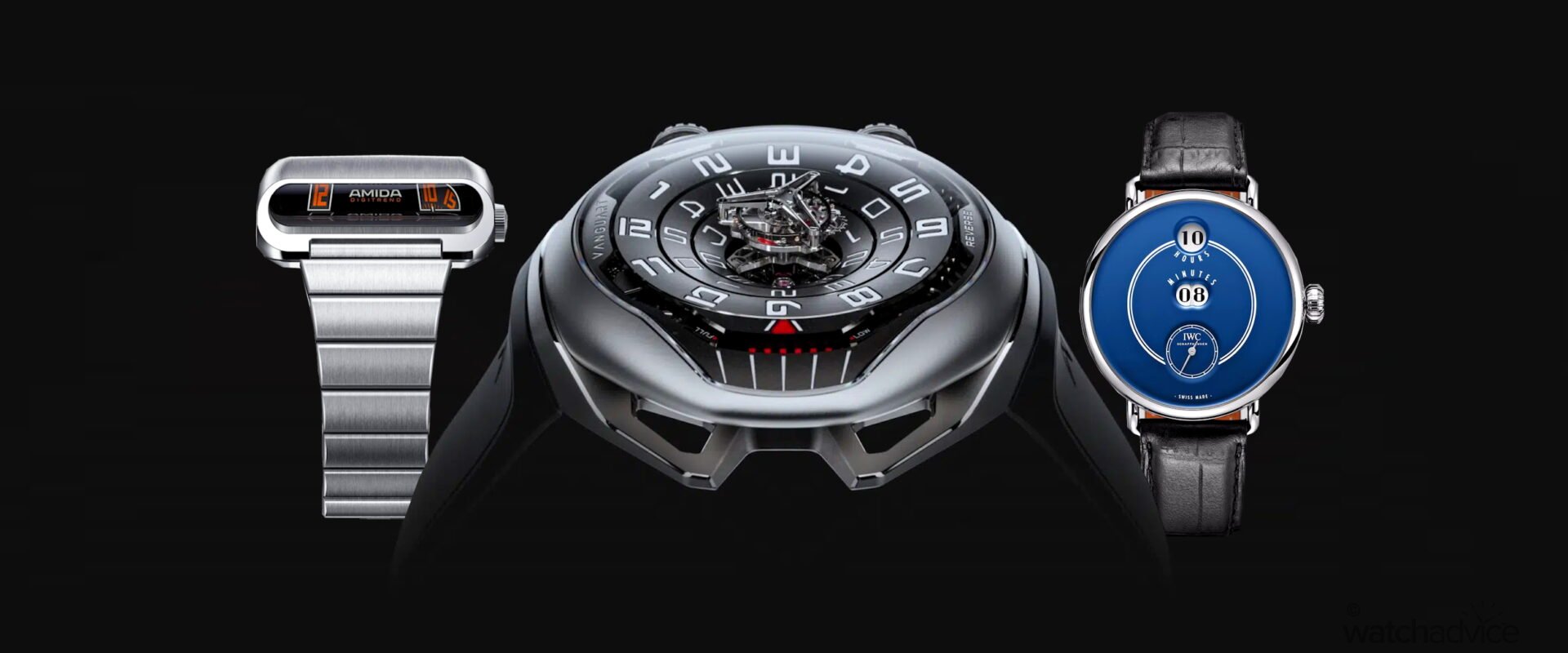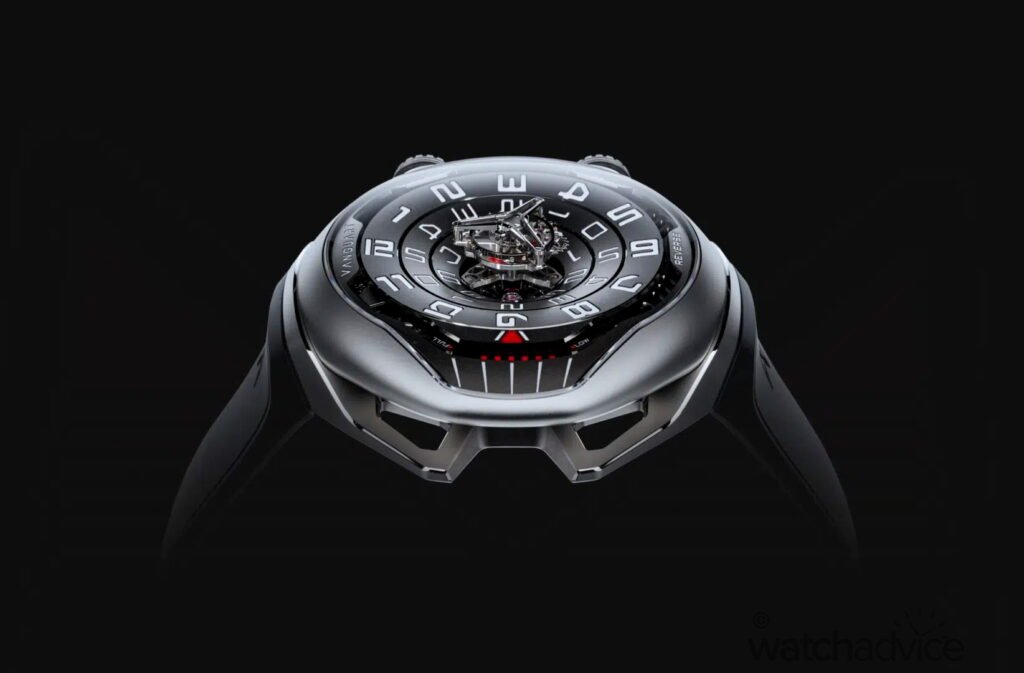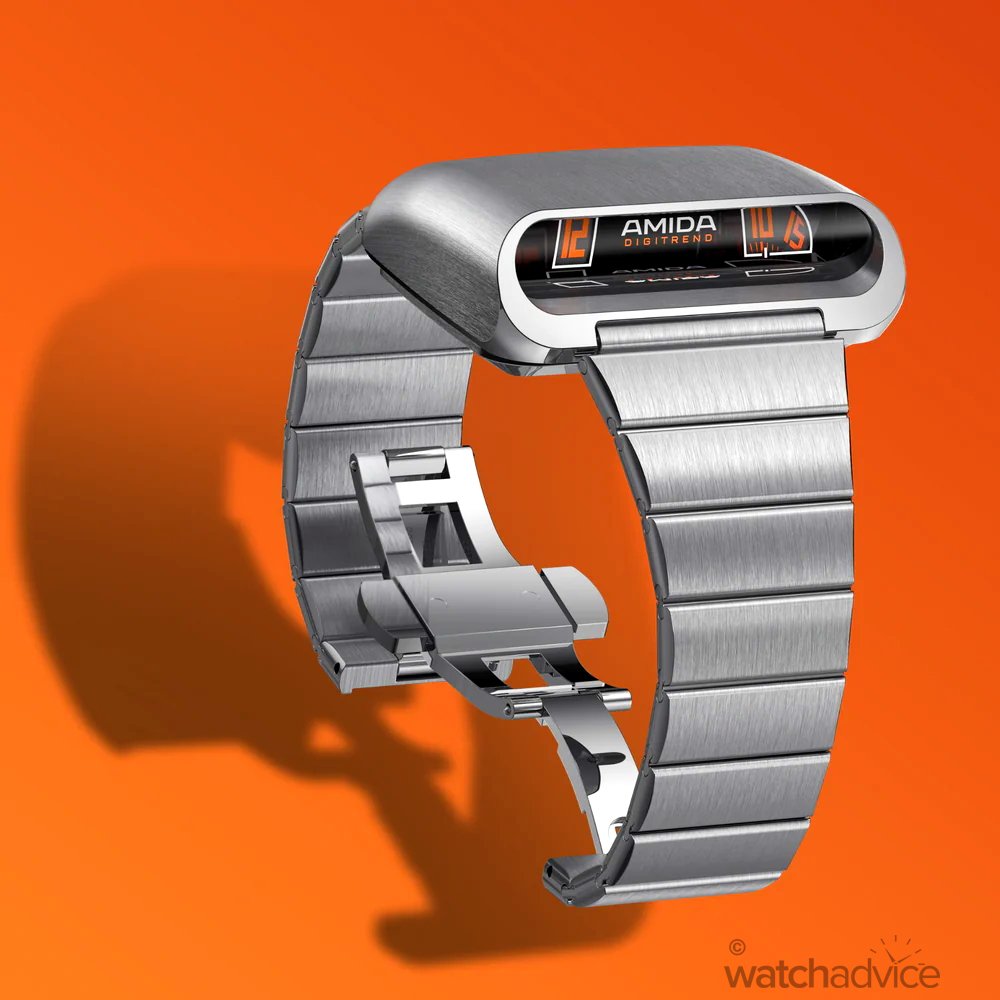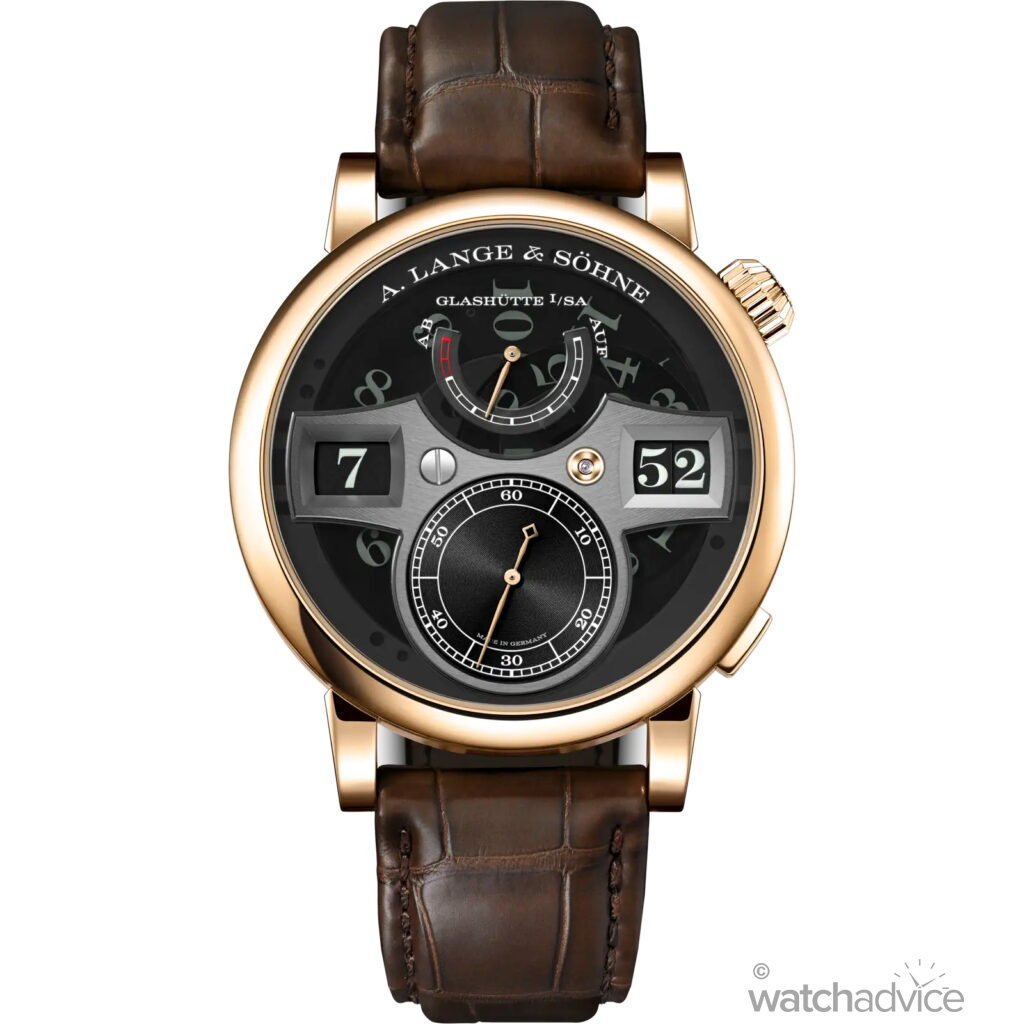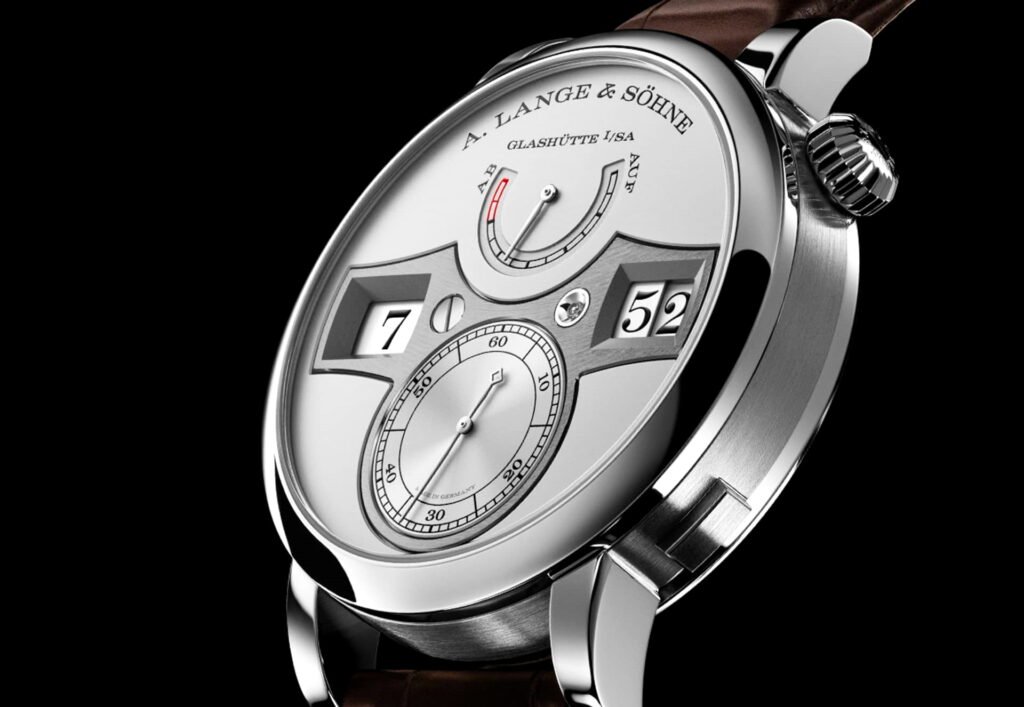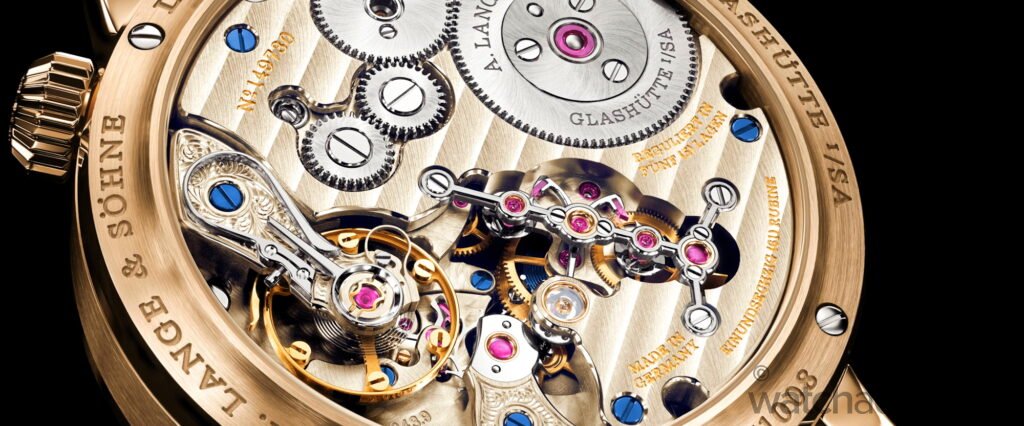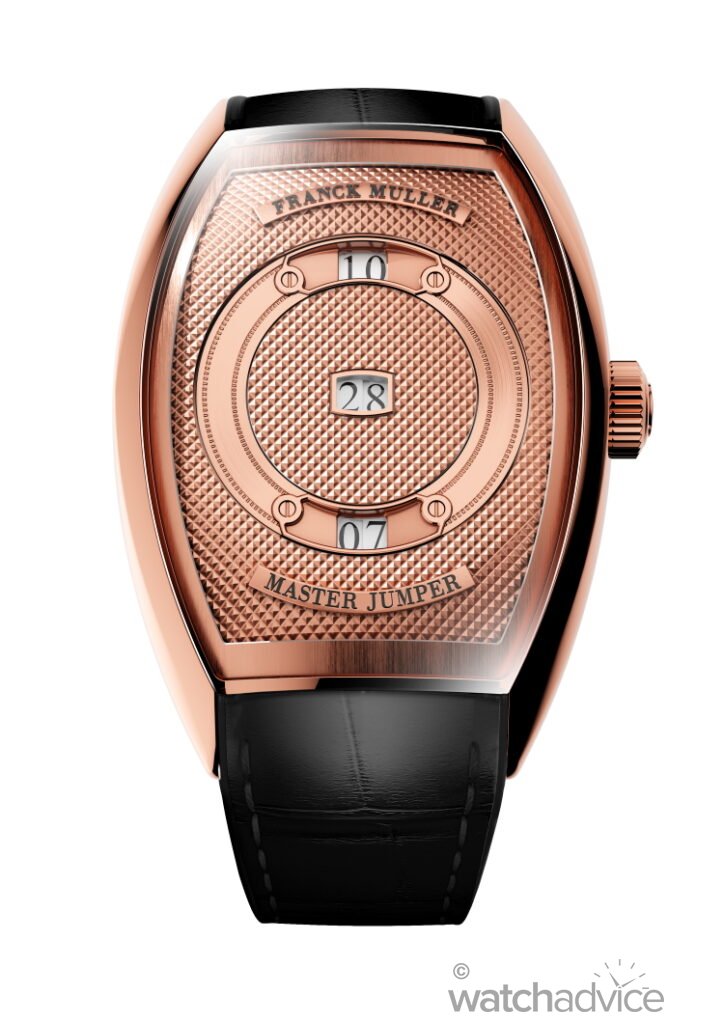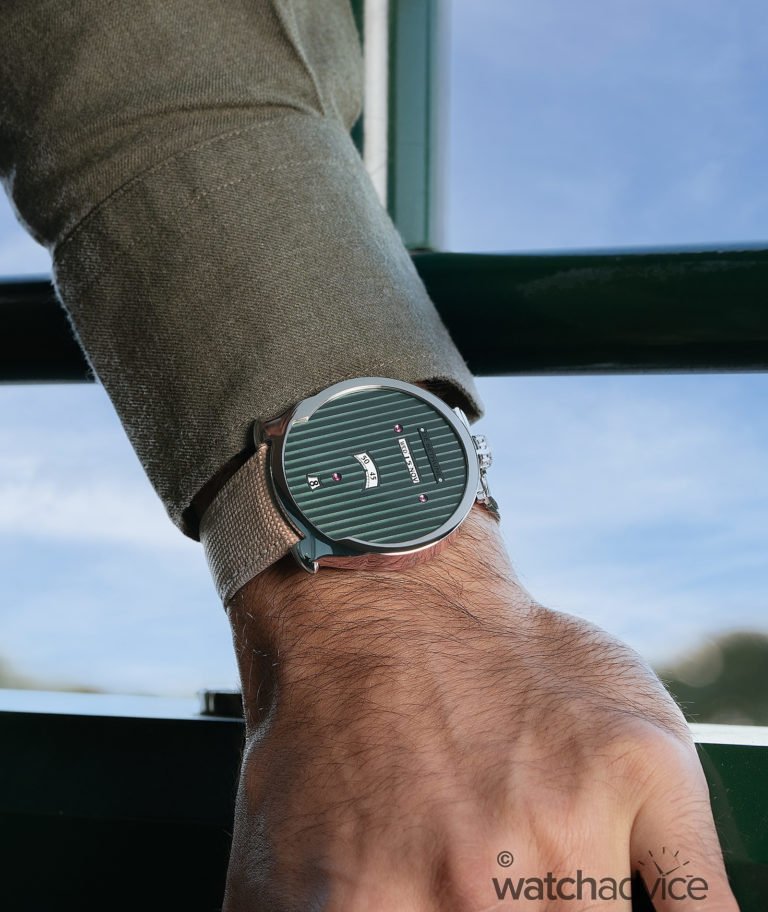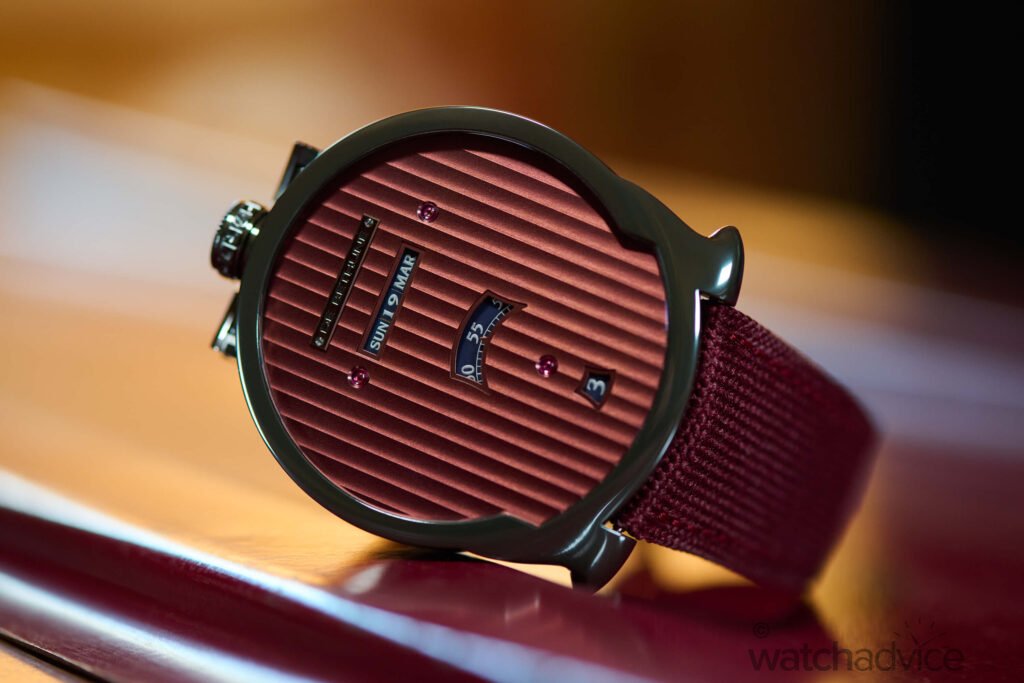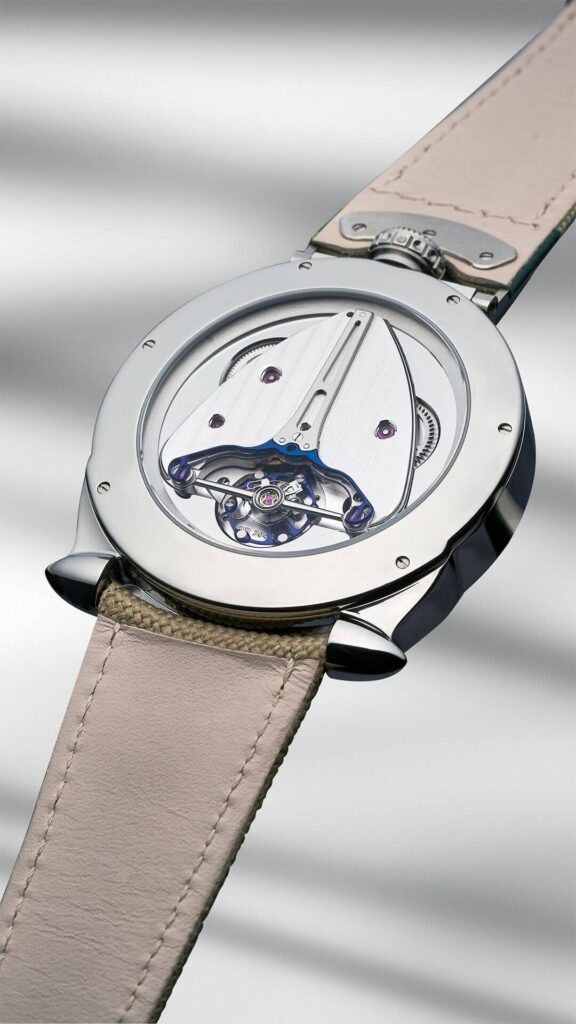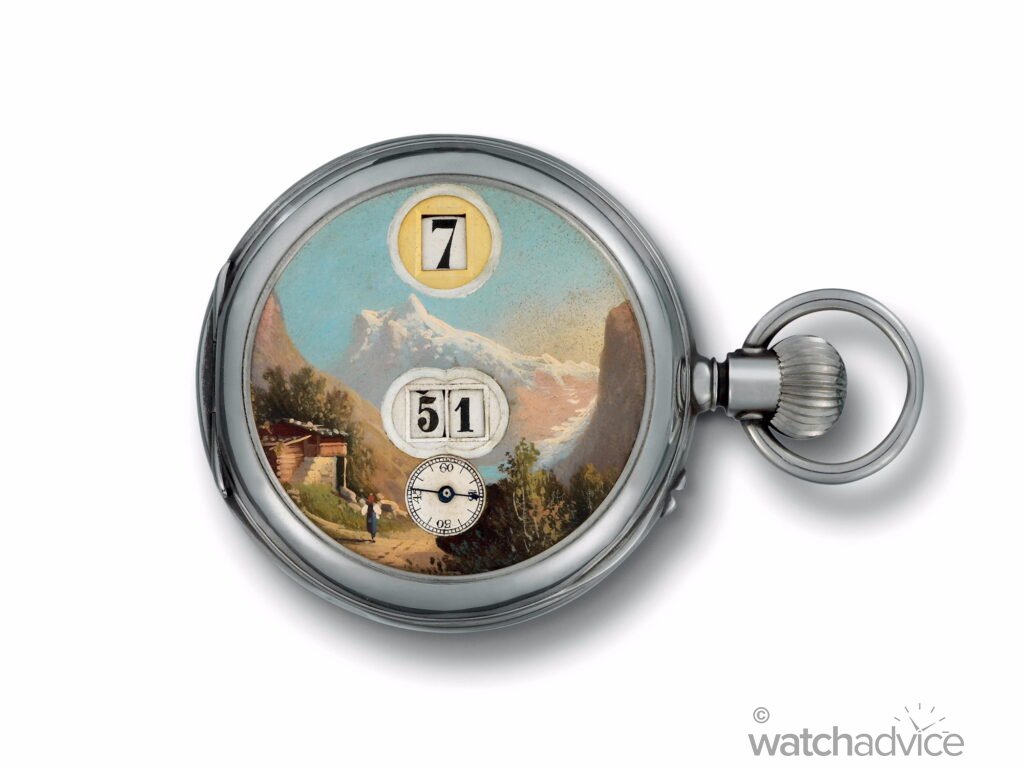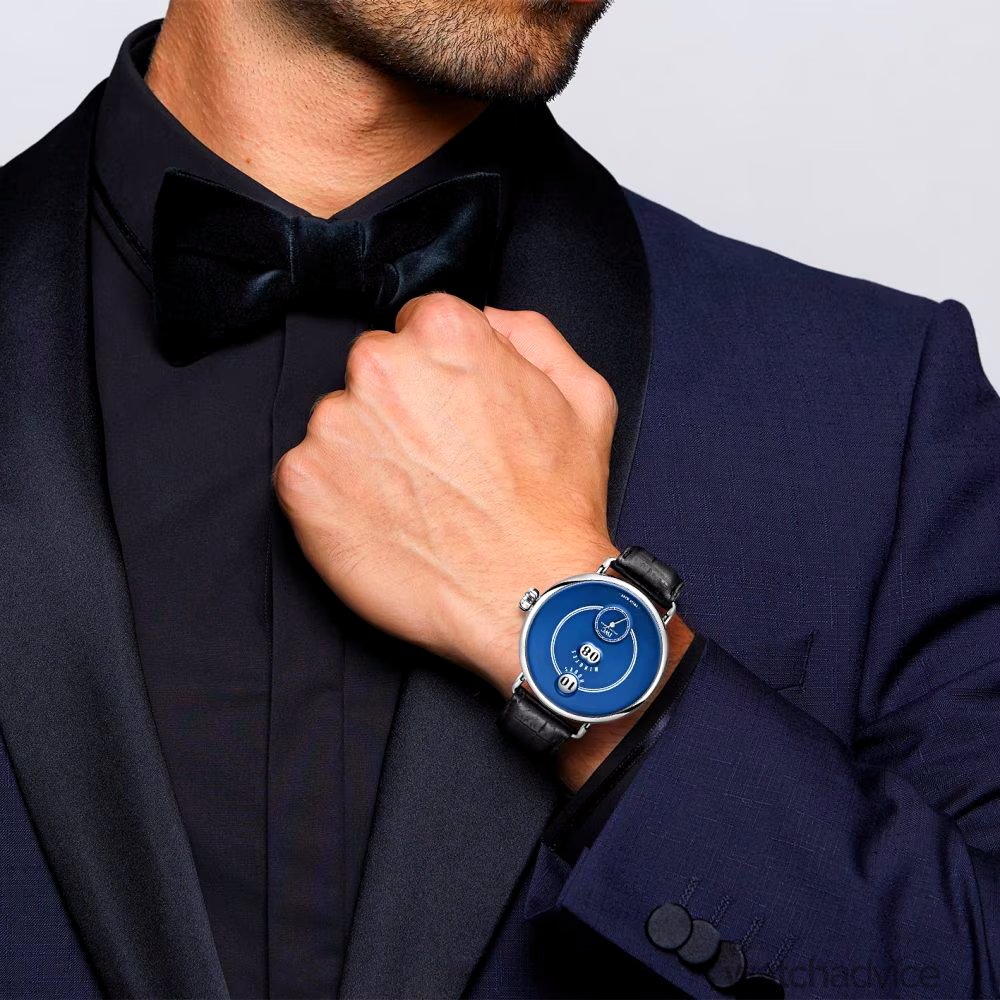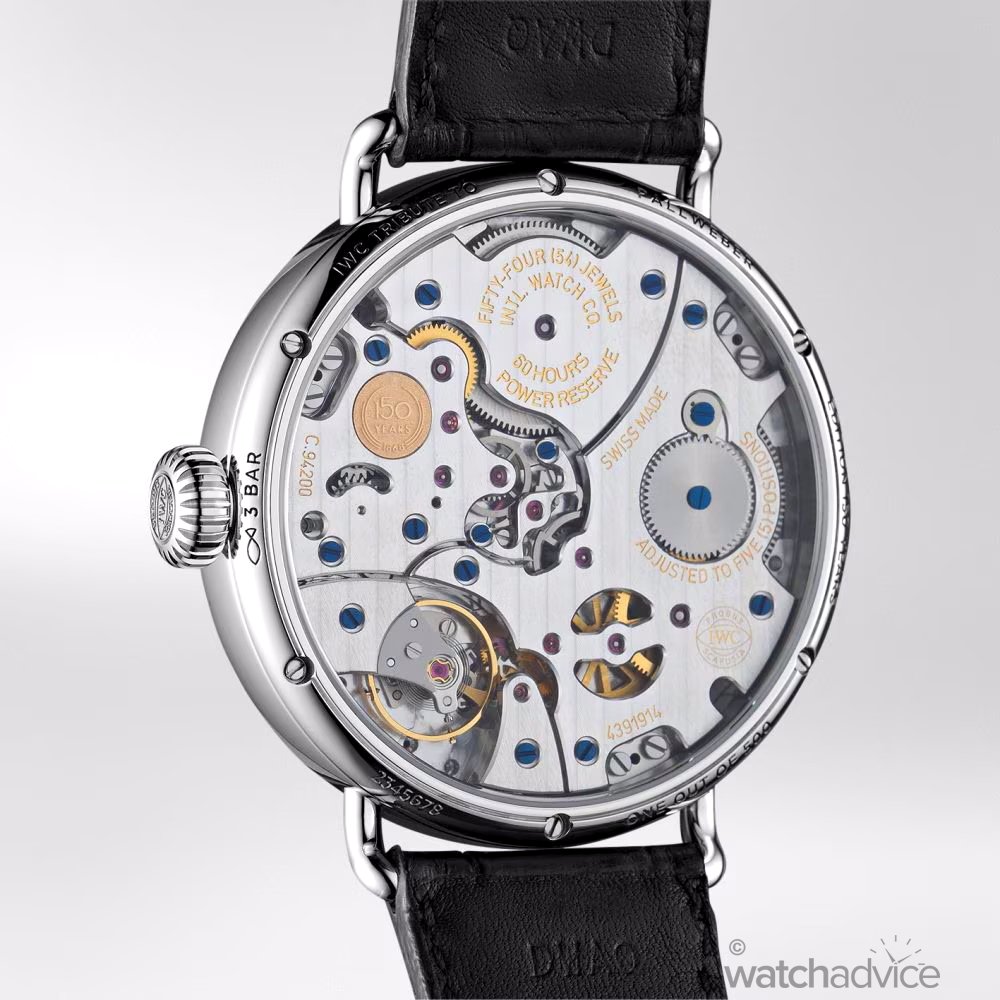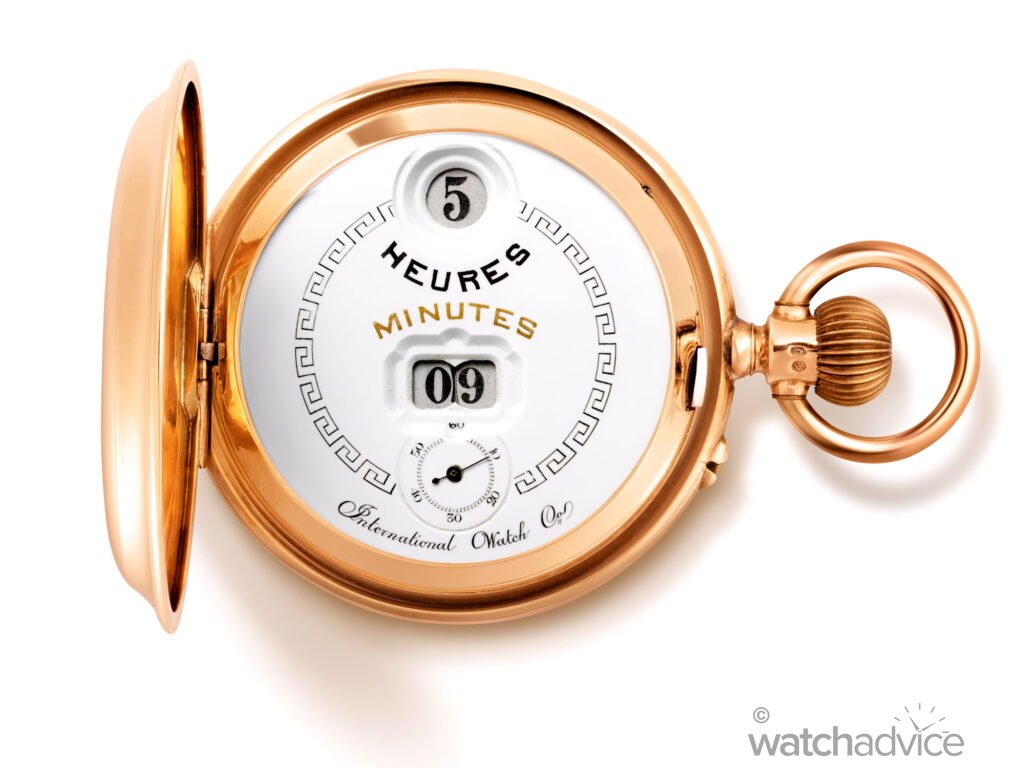Who says you can’t mix digital and mechanical together? In this article, we delve into the marvels of those who are taking mechanical pieces of art and displaying the time digitally…
Digital time is such an underrated complication in mechanical watches. Yes, you can access digital time on practically any screen, phone, or piece of wearable tech these days. But, it’s infinitely more satisfying to see how mad craftsmen the world over have harnessed digital time displays through flawless feats of engineering. This list comprises some of my favourites that represent the very best of this complication!
1 – Vanguart Black Hole Tourbillon
I just had to talk about this one, as I can confidently say it’s one of the most incredible feats of microengineering have ever seen. Vanguart is a fairly new independent brand in the haute horlogerie scene, having been founded in 2017 by Axel Leuenberger, Jeremy Frelechox, Thierry Fischer, and Mehmet Korutürk. Leuenberger and Frelechox are both seasoned veterans of APRP (Audemars Piguet, Renaud & Papi) and Fischer is a seasoned watch designer, with Korutürk standing as the President of the company.
Despite its gargantuan 49mm wide, 48mm long and 10.5mm thick stature, the Vanguart Black Hole Tourbillon’s design is as abstract as it is organic and sleek. Every line of the watch flows seamlessly, with no visible screws or pins. This allows for an alien, yet seamless wearing experience – a credit towards the design chops of Fischer. The dial features three concentric rings of Arabic numerals, designed with a subtle concave shape to enhance the illusion of depth. A tourbillon has been placed into the centre of the dial, evocative of the timepiece’s namesake.
Related Reading: The Art Of Complications – The Tourbillon
The movement powering all this horological goodness is the manual wind T-1701, which runs on a 3Hz (21,600VpH) beat rate backed by 42 hours of power reserve. While 42 hours may not seem like the best in the world, keep in mind that it’s not only powering the central tourbillon, but the Vanguart Black Hole carries a few more tricks up its sleeve, such as the vertically tracked power reserve, visible at the 9 o’clock; and dual crowns with what Vanguart calls ‘joystick time setting.’ Instead of having to spin either crown to adjust the time, Vanguart’s crowns require just a nudge forward or backwards to dynamically adjust the time of the watch.
The Vanguart Black Hole Tourbillon is simply magical in both form and function. It really goes to show that, even now, new ground is being broken in watchmaking almost every single day. No wonder why they were able to get the support of investors like Hayden Kho and James Harden – who wouldn’t want to be a part of this craziness?
Availability: 8 pieces in each material (Titanium, rose/white gold), International RRP CHF290,000 (Titanium) or CHF320,000 (Rose/white gold). Find out more at Vanguart’s official website.
2 – Amida Digitrend
Certainly in more accessible territory is Amida, which has burst onto the scene in 2024 after nearly five decades in hibernation. Founded in 1925 in Granges, Switzerland, the fledgling watch company would be one of many brands unfortunately swept up in the Quartz Crisis, collapsing in 1979. The Digitrend, introduced three years prior at the Basel Fair, would become one of the company’s crowning achievements. One of the first casquette watches in the world, the Amida Digitrend’s modern (for the time) driver-style design became an immediate sensation.
In 2024, the brand was brought back into the limelight thanks to a renewed Amida crew, led by Matthieu Allègre and Clément Meynier. Naturally, the Digitrend was the first place they decided to go, resulting in a faithful remaster of their most iconic watch. The smooth, retro-futuristic design features a 39.6mm x 39 x 15.6mm monobloc brushed stainless steel case, accompanied by either a brushed steel strap or one of black Alcantara textile.
The core of the Amida Digitrend is powered by an automatic Soprod Newton P092 movement, with a respectable 44-hour power reserve and specialist modifications for the time display. At first glance, a horizontal time display the way that Amida does it seems to have ‘engineering nightmare’ written all over it. However, that is far from the truth – in 1973, Amida was able to solve this simple problem by way of optical illusion, utilising reflective crystal prisms to reflect light similarly to a submarine’s periscope.
Related Reading: MB&F Relives The Dream With The HM8 MkII
In this modern watch world, I’ve found that more and more brands are being brought back out of extinction – kind of like Jurassic Park for watch enthusiasts, and it’s only ever a good thing! By bringing back the brands of the past, not only are we able to spiritually succeed their founders, but also learn from their achievements and shortcomings. For the watch industry to see the way forward, it must learn to look back. In Amida’s case, they’ve done the looking back part – now the real work truly begins.
Availability: Available for waitlist (Launch Edition no longer available), International RRP CHF3.250. Find out more at Amida’s official website.
3 – A. Lange & Söhne Zeitwerk
Of course, we can’t talk about digital time without talking about what I deem to be the world-beater of the digital time complicatiion. The A. Lange & Söhne Zeitwerk collection, initially released in 2008, is one of the more abstract offerings from the Glashütte-based brand. At 41.9mm in case diameter and standing 12.2mm thick, it’s certainly not your typical delicate dress watch. But, the insane level of mechanical and aesthetic complexity has made it one of the most desirable timepieces around.
So much so, that A. Lange & Söhne have released six different versions of the Zeitwerk (German for ‘time work’) as of 2024. This includes an assortment of additional features such as: date wheels; minute repeater and decimal strike complications; translucent dials; and further accompanied by cases of platinum, white gold and their proprietary HONEYGOLD®!
Related Reading: A. Lange & Söhne Zeitwerk Minute Repeater in Honeygold
It’s hard to talk about the Zeitwerk without first mentioning that dial, which is unlike anything you will ever see in another watch. Enlarged, outsize hour and minute indicators take up the 9 and 3 o’clock positions respectively, followed by a small second sub-dial at 6 o’clock with the signature ‘Auf/Ab’ power reserve indicator situated right above. What I love the most is that the outsize digital time indicators are made separate from the rest of the dial, with A. Lange & Söhne making no pretences as to the mechanical nature of this masterpiece.
And that’s only the half of it, considering the manual wind L043 series of movements – complete with an oddly situated 2 o’clock crown – is one of the most gorgeous pieces of machinery ever hand-crafted by a human being. Just creating a movement efficient enough to withstand the level of complexity that the Zeitwerk offers is an achievement in of itself; yet the master watchmakers of A. Lange & Söhne have managed to do so whilst offering power reserves of up to 72 hours – and still have time to hand finish every aspect of the watch!
Availability/RRP: Upon Request. Find out more at A. Lange & Söhne’s official website.
4 – Franck Müller Curvex CX Master Jumper
However, if there’s anyone that’s going to contend with A. Lange & Söhne in the digital time arena, Franck Müller is a brand that would be eager to step up to the plate. Unveiled in July 2023, the Curvex CX Master Jumper series is one of those timepieces that can either establish or re-establish a legacy. For Franck Müller, a brand that has lost some popularity in the Western world, it does the latter, permitting them to gleefully live up to their reputation as the ‘Master of Complications.’
Presented in a 40mm x 55.4mm x 10.8mm case, the Curvex CX Master Jumper proves that, for a mechanical watch, no hands is no problem. The dial is completely barren, save for the simple yet elaborate guilloché and three vertically aligned digital displays. These displays tell the hour, minute, and date respectively, and are connected by a circular cut-out meant to evoke the image of the movement on the front of the dial.
Speaking of movement, the Franck Müller Curvex CX Master Jumper contains the manual wind Cal. MVT FM 3100-C1, which powers all the above complications with ease. Yes, it only has about 30 hours of power reserve, but a watch like this is hardly suited for everyday wear (unless you can afford it). Additionally, Franck Müller also has to contend with not just the complications, but the challenges of restricting their engineering prowess to the confines of the Curvex case. At the end of the day, it’s a beautifully designed watch, and Franck Müller has invested their time to ensure that the movement perfectly fits into the case. And for that, I think it’s a kick-ass statement piece.
Availability: Upon Request, International RRP CHF72,800 (Rose/white gold). Find out more at Franck Müller’s official website.
5 – De Bethune DBD
Related Reading: De Bethune kicks off Dubai Watch Week 2023 With Brand New DBD Evergreen!
Coming a little out of left field is independent brand De Bethune, who specialise in keeping within a unique horological aesthetic. It’s hard to stand out in haute horlogerie, especially when every release is as spectacular as the last, but the L’Auberson brand prefers it that way. They love keeping to themselves whilst at the same time producing ruthlessly well-crafted timepieces, dropping them to the surprise and wonder of enthusiasts worldwide. At Geneva Watch Days 2024, for example, they would find themselves close to the mainstream spotlight with a double drop of watches within their DB28 collection.
Related Reading: De Bethune’s DB28 goes XS x2 for Gevena Watch Days
As much as I gushed about those two, I would have to say my favourite release from them is one of their lesser talked about – especially considering that it’s extremely limited. The DBD collection, initially referred to as DBS Digitale in 2006, is an unorthodox watch among unorthodox watches.
At 42.6mm diameter with just 9.4mm thickness, the minimalist nature of the De Bethune DBD plays extremely well with its vertical crown and bizarre case shape, complete with ‘ogive-shaped’ lugs. Côtes de Genève striping is prevalent on the dial, available in either red (DBD ‘Season 2’) or green (DBD ‘Evergreen’), and comes complete with a completely symmetrical complication layout: a triple calendar (day/date/month) flanked by two rubies, with the minute and hour indicators situated below.
Completing the watch is the innocent-looking Cal. DB2044 movement, which has been delicately shaped and completed with a heat-blued escapement. However, don’t let the simplicity fool you, as the DB2044 carries with it a monstrous amount of specs, thanks to the in-house development team at De Bethune. In the relatively thin case, the brand has still managed to cram in a triple pare-chute shock-absorbing system, a 4Hz (28,800VpH) beat rate, and a scarcely believable 120 hours of power reserve! Such a thing would be almost impossible to believe, were it made by anyone else. However, De Bethune takes themselves extremely seriously, and despite its simple and innocent nature, the De Bethune DBD collection is as serious as it gets.
Availability: Limited to 20 pieces (Evergreen) and 13 pieces (Season 2), International RRP CHF105,000. Find out more at De Bethune’s official website.
6 – IWC Tribute to Pallweber Edition 150 Years
As I said, to move forward in the watch industry is to look back. IWC proved to be no exception to the rule, as the Schaffhausen-based brand is highly regarded to be one of the progenitors of the digital time complication with the Pallweber pocket watch. Invented by Josef Pallweber in 1883, he would grant the production licenses to IWC, who would make and sell over 16,000 copies of Pallweber’s invention until the 1890s.
Related Reading: The History Of IWC Schaffhausen
In 2018, IWC would celebrate their 150th anniversary by heralding in the IWC Tribute to Pallweber Edition collection, effectively resurrecting the classic aesthetic for a more contemporary (and wristwatch-oriented) audience.
IWC preserved the design elements that enthusiasts loved about the original pocket watch – particularly the hour/minute/small second layout – in a 45mm diameter, 11.9mm thick case. These timepieces were available in both steel and red gold, with lacquered dial options of deep blue or stark white. Three discs comprise the digital time display of hours and minutes, with a minimal yet elegantly designed small second sub-dial sunken down for dimensionality’s sake. Forgive me if I don’t sound super excited about these watches, though; It’s not that I don’t like the design, but the classic and simplistic design does more of the talking than I could ever possibly describe.
What I can talk about with excitement, though, is the movement they used for this special tribute. The manual wind Cal. 94200, an offshoot of the Cal. 94000 series of movements, was specifically made to hold up to the added complexities of the Tribute to Pallweber Edition collection. The Cal. 94200 was complete with a 60-hour power reserve, 4Hz (28,800VpH) beat rate, beautiful finishing, and a commemorative medallion inside the movement.
The IWC Tribute to Pallweber Edition collection would the perfect nod to one of their earliest and most significant horological contributors. Josef Pallweber’s innovation and craftsmanship would set the standard high, inadvertently paving the way for other legends like Albert Pellaton, Richard Habring and Gérald Genta to indelibly mark their legacy in IWC, with the brand paying tribute to all of them in kind.
Availability: No longer available, Grey Market Est. AU$30,000 – AU$60,000 (Chrono24). Find out more at IWC’s official website.


